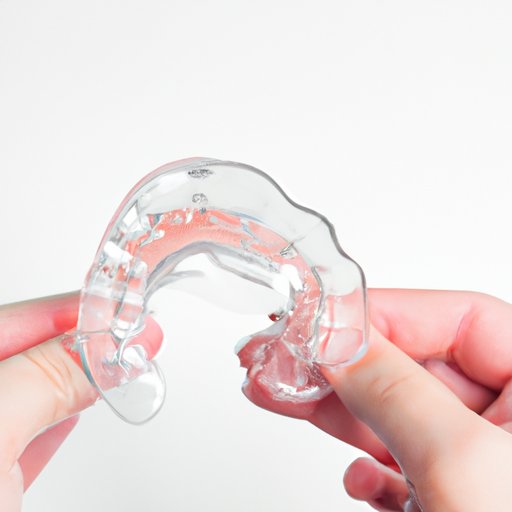How to Clean a Retainer: A Complete Guide
Retainers play a crucial role in maintaining proper dental health after orthodontic treatment. But, it is equally important to keep them clean and hygienic to prevent the buildup of bacteria and bad breath. In this article, we will discuss why it is important to clean retainers and provide a step-by-step guide to clean them effectively.
Importance of Cleaning Retainers
The most obvious reason to clean your retainers regularly is maintaining good oral hygiene. If retainers are not cleaned properly, they can serve as breeding grounds for bacteria and plaque. This can cause bad breath and lead to infections that can affect your overall dental health. The bacteria that build up on your retainers can also cause tooth decay and other dental problems, undoing all the hard work you put into keeping your mouth healthy.
Step-by-Step Instructions for Cleaning Retainers
The best way to clean retainers is by using a cleaning tablet or solution specifically designed for them. Here are the steps to using cleaning tablets:
- Fill a glass or plastic container with warm water. Water should not be too hot, lukewarm is fine.
- Drop one cleaning tablet into the water and wait till it dissolves completely.
- Put the retainer into the container, making sure it is submerged completely in the water.
- Let the retainer soak for about 15 minutes.
- After 15 minutes, take the retainer out of the container and rinse it under lukewarm running water to remove any residue.
If you do not have cleaning tablets or solutions, you could use mild soap and water as an alternative cleaning method. Make sure to use a soft toothbrush and a non-abrasive soap to clean your retainer effectively.
Additional Tips for Cleaning Retainers
Here are some additional tips to help you in cleaning retainers:
- Use a soft-bristled toothbrush: Brushing your retainer with a soft-bristled toothbrush will help remove any debris or buildup without scratching or damaging the material.
- Avoid Hot Water: Avoid using hot water to clean your retainer as this can lead to warping or damage to the material.
- Rinse in Cold Water: Always rinse retainers under cold water after cleaning to remove any residue and prevent the buildup of bacteria.
- The Cleaning Method Depends on the Type of Retainer: The cleaning method for your retainer will be different based on the material it is made of. For example, cleaning methods for a plastic retainer will be different from those used to clean a wire retainer.
Alternative Cleaning Methods
For those who don’t have cleaning solutions or tablets, there are alternative cleaning methods to use. One such method includes mixing baking soda with water to create a paste or using a solution of vinegar and water.
To use baking soda, create a paste by mixing two teaspoons of baking soda with a small amount of water. Use a soft-bristled toothbrush to gently scrub the paste onto the retainer without scratching the surface. Rinse with lukewarm water and dry well before use.
To use vinegar and water, mix equal parts of vinegar and water to create a solution. Let the retainer soak in this solution for about 30 minutes. Rinse thoroughly with lukewarm water before using it again.
Proper Storage for Retainers
Storing a retainer properly is important for maintaining its quality and reducing the risk of damage or contamination. When the retainer is not in use, rinse it thoroughly, then store it in a dedicated container. This container should be clean, dry, and have a tightly closed lid to prevent any airborne contaminants from settling on the retainer. Avoid storing the retainer near pet hair, food, or non-sanitized surfaces to keep it free from contamination.
Myths and Misconceptions about Cleaning Retainers
There are many myths and misconceptions surrounding the cleaning of retainers. One such myth is that boiling the retainer can be an effective cleaning method. However, this is not true, as boiling water can cause the retainer material to warp or even melt. Another myth is that brushing a retainer with toothpaste is sufficient for cleaning. While it may remove surface stains, it does not remove all of the bacteria and buildup that can accumulate on the retainer.
Conclusion
Regularly cleaning your retainer should be an essential part of your dental routine. Using a cleaning tablet, mild soap, or baking soda and vinegar solution can help to keep your retainer free of bacteria and plaque. In addition to cleaning your retainer, proper storage is essential to maintain its quality. We hope these tips on how to clean your retainer have been helpful. Keep in mind that it is always best to follow the specific instructions for cleaning your retainer provided by your orthodontist.
